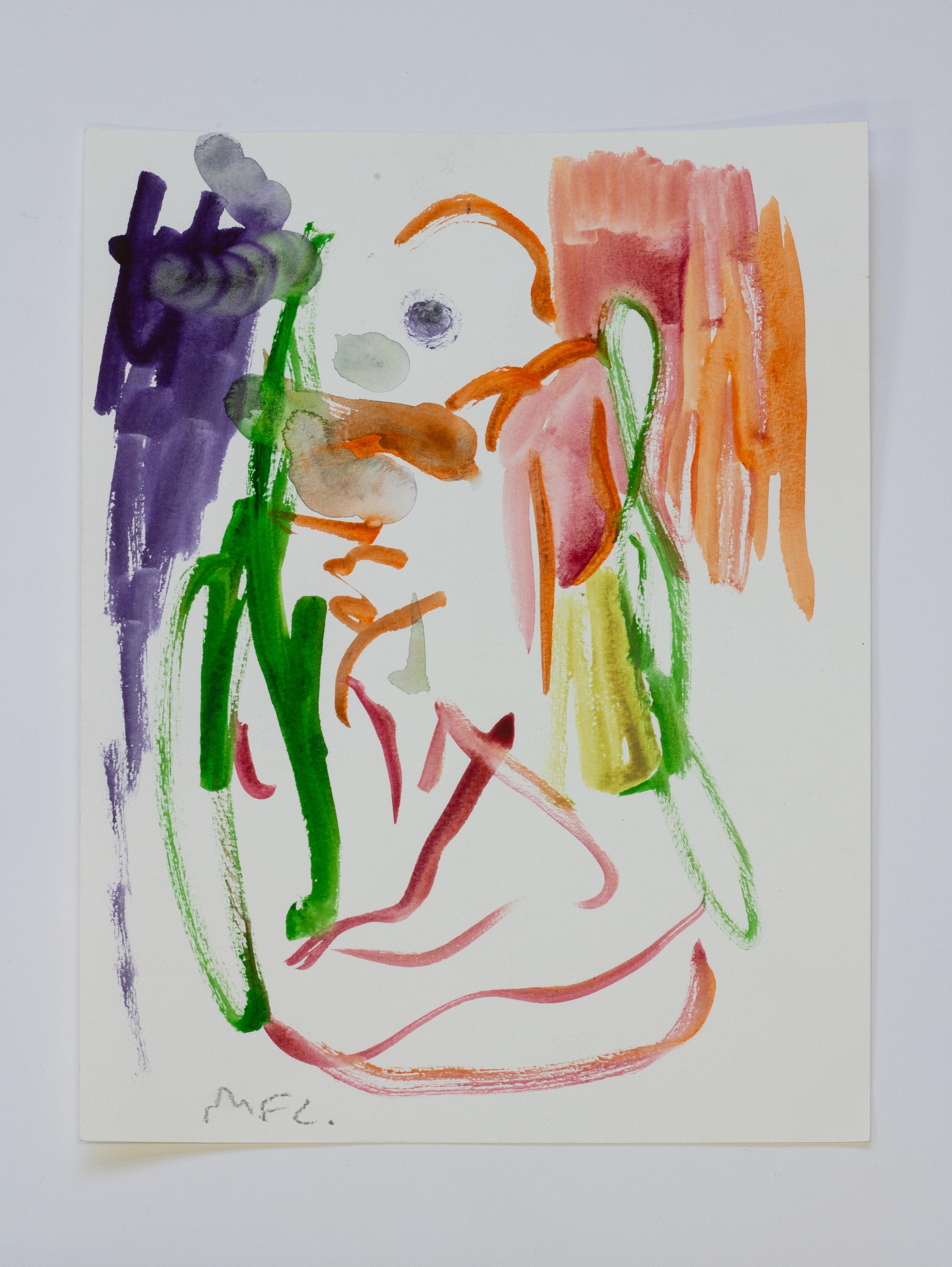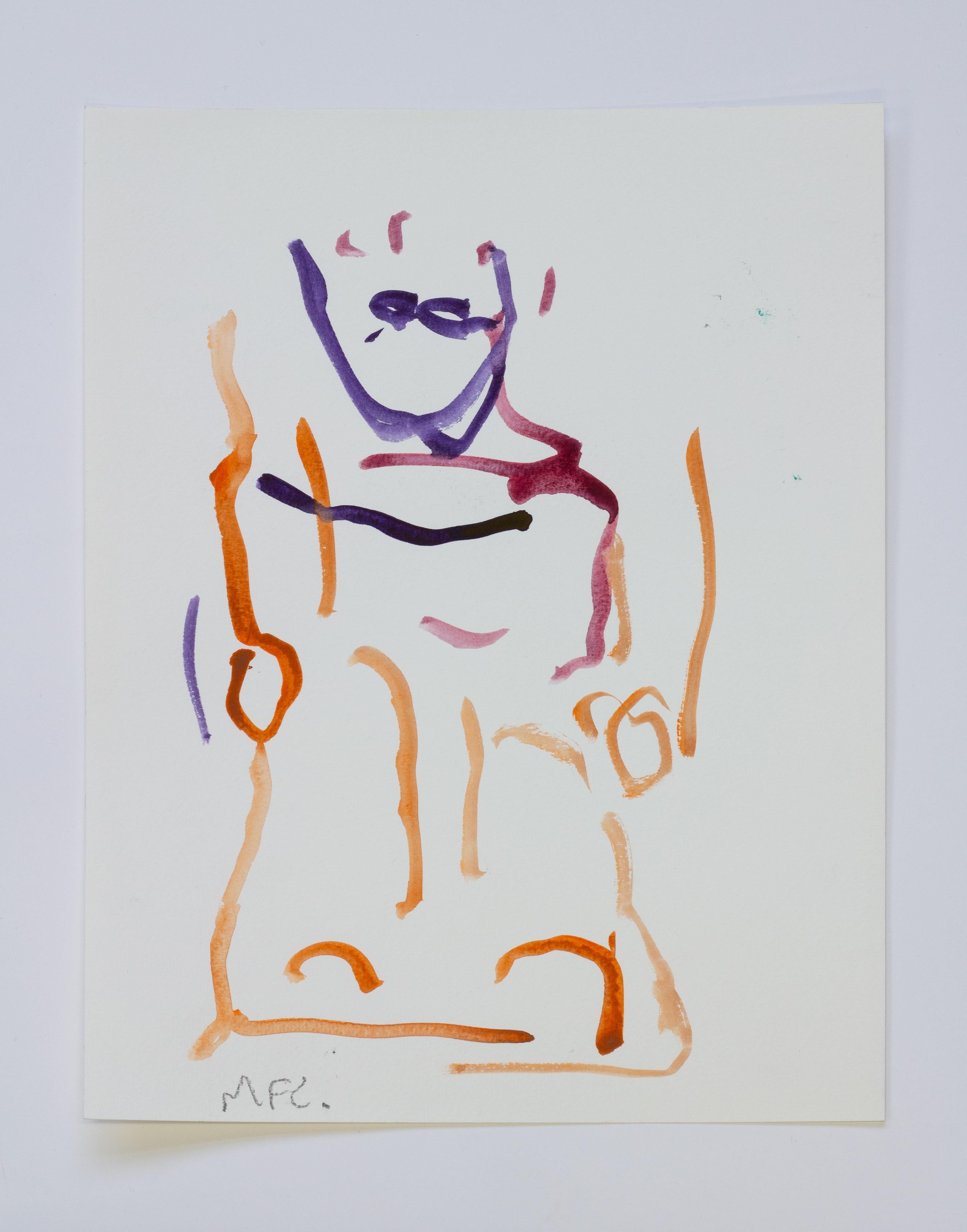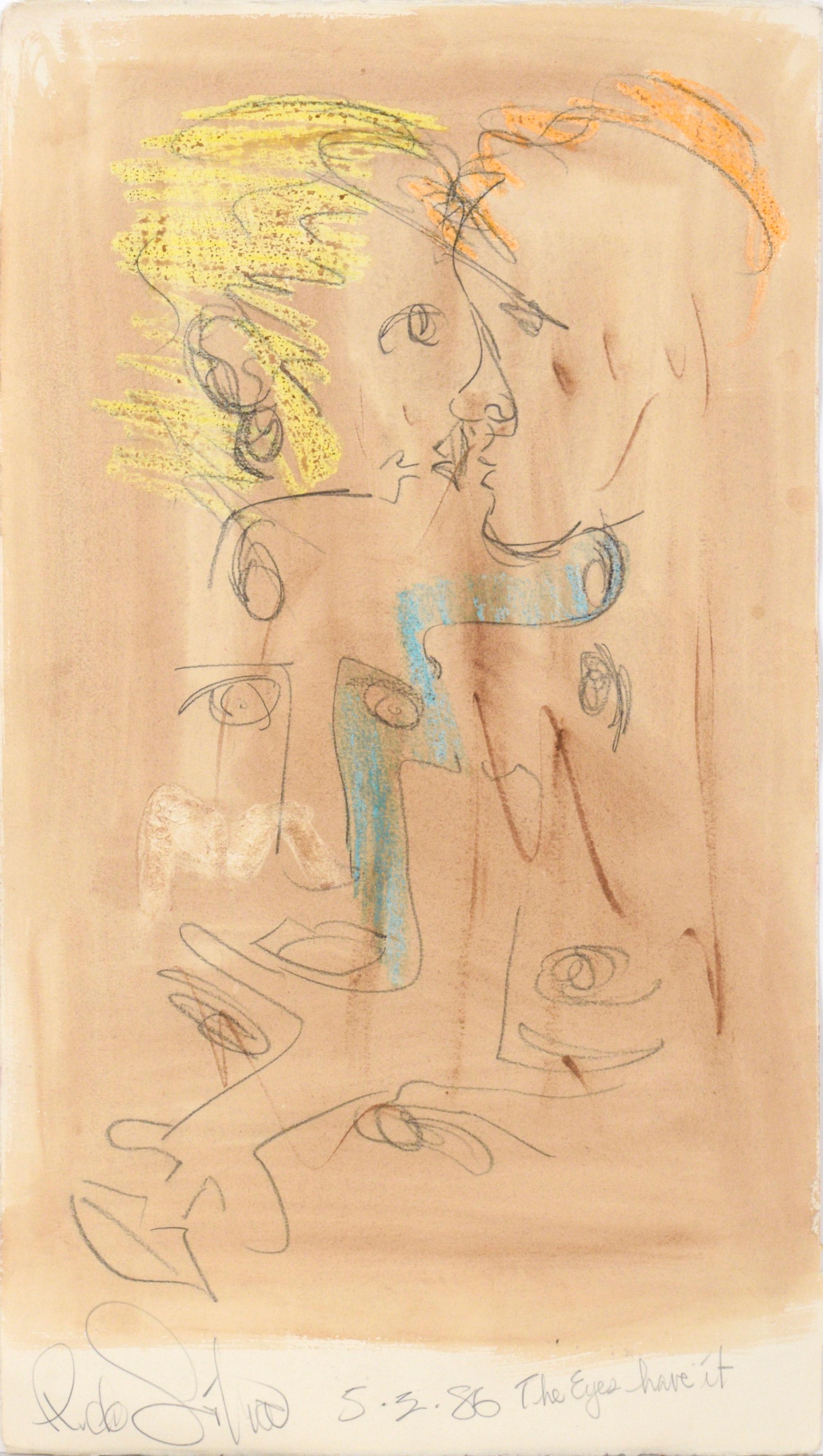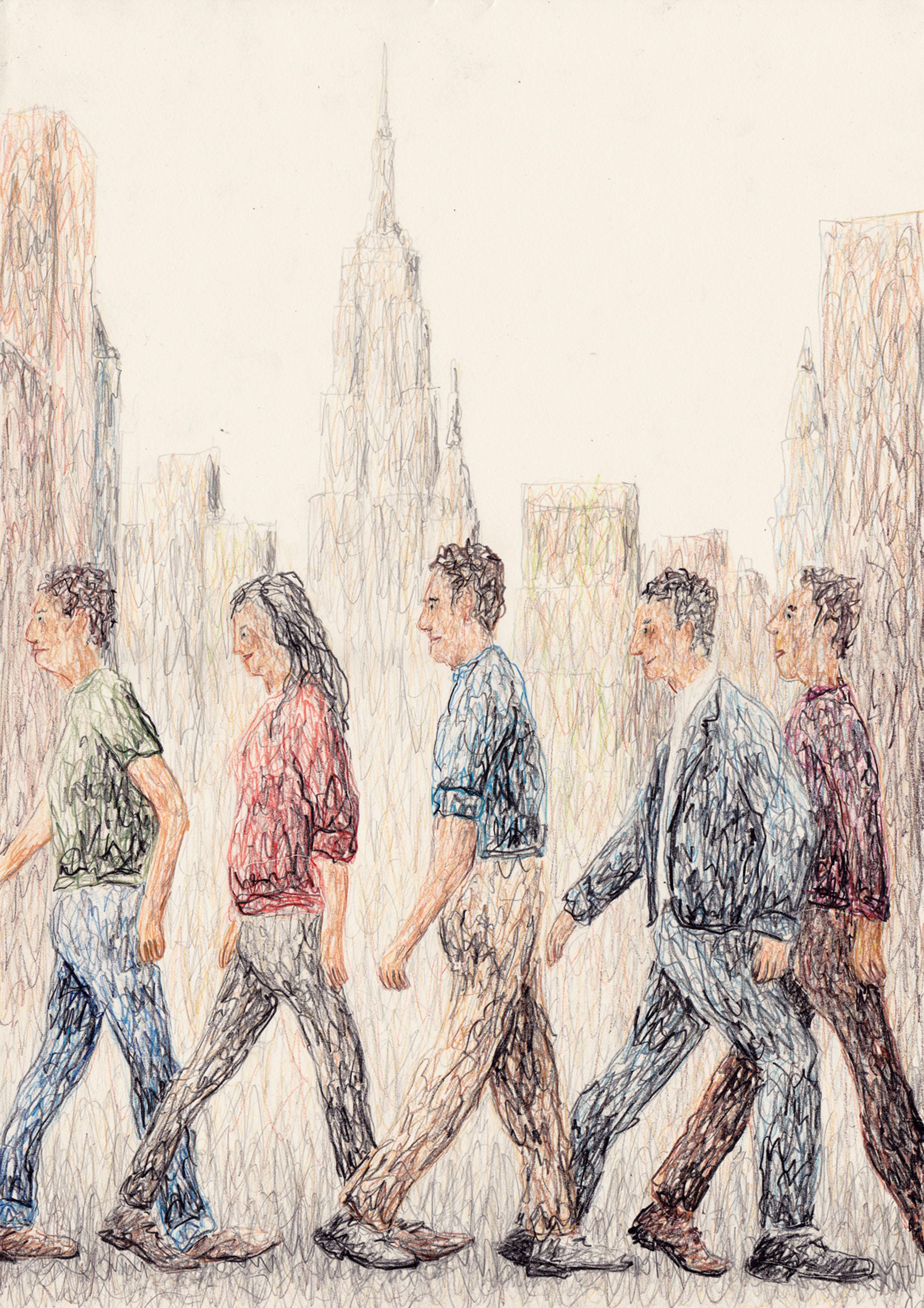Items Similar to Untitled (Woman working in the fields)
Want more images or videos?
Request additional images or videos from the seller
1 of 12
Daniel Ridgway KnightUntitled (Woman working in the fields)1890's
1890's
About the Item
Untitled (Woman working in the fields)
Graphite on wove paper
Unsigned
Exhibited: Spanierman Galleries, In Praise of Women, Oct. 21-Nov. 20, 2010
Illustrated: Lisa N. Peters, In Praise of Women, Spanierman Galleries (see catalog entry in photos)
Condition: Excellent
Sheet size (sight): 14 1//2 x 10 5/16 inches
Provenance: Spanierman Galleries, New York
The young woman is a known model for Knight. She is depicted in numerous paintings. The striped skirt and wooden shoes she wears also is repeated in Knight's oeuvre.
"Daniel Ridgway Knight was born in Philadelphia to a Quaker family and studied at the Pennsylvania Academy of the Fine Arts from 1858 to 1861, the year he became a founding member of the Philadelphia Sketch Club. He went to Paris and studied at the Ecole des Beaux-Arts from 1861 to 1863 with Charles Gleyre (1808-1874) and Alexandre Cabanel (1823-1889), and attended the Accademia di San Lucca, then in Venice, in 1863. Knight returned to Philadelphia that year, married, and served in the Union Army during the Civil War. He went back to France in 1871 and lived there for the remainder of his long and successful career. He settled in Seine-et-Oise near Poissy to study with the noted academic painter Jean-Louis-Ernest Meissonier (1815-1891) in 1873, and the two artists became close friends. Influenced by his French contemporaries Jules Bastien-Lepage (1848-1884) and Jules- Adolphe-Aimé-Louis Breton (1827-1906), during the middle 1870s Knight began to paint sentimental representations of peasant women in their rural settings. As an early biographer noted, the artist was “for the most part the painter of a single class of models—demure little peasant girls with their wooden shoes and picturesque costumes.” His idealized treatment of such subjects was a far cry from the progressive realist works of Jean-Francois Millet (1814-1875) that stressed the hardships of life among French peasants. Knight’s best known painting Hailing the Ferry (1888, Pennsylvania Academy of the Fine Arts) was an immense success that assured his reputation in both the United States and Europe. Knight exhibited most often at the Paris Salon from 1873 until 1921. In the United States he exhibited at the Pennsylvania Academy twelve times between 1858 and 1910, the National Academy of Design in New York from 1870 to 1878, and intermittently at the Brooklyn Art Association. He opened a studio outside Paris in Rolleboise-par-Bonniers in 1896, and selected subjects from the surrounding countryside and local people. Knight won many professional distinctions throughout his long career, and was made a chevalier of the Legion of Honor in 1889 and a knight of St. Michael of Bavaria in 1892. Knight worked as a pictorial propagandist for the French government during World War I. He died in Rolleboise-par-Bonniers."
Courtesy Schwartz Gallery
- Creator:Daniel Ridgway Knight (1839 - 1924)
- Creation Year:1890's
- Dimensions:Height: 14.5 in (36.83 cm)Width: 10.32 in (26.22 cm)
- Medium:
- Movement & Style:
- Period:
- Condition:
- Gallery Location:Fairlawn, OH
- Reference Number:
About the Seller
5.0
Recognized Seller
These prestigious sellers are industry leaders and represent the highest echelon for item quality and design.
Platinum Seller
These expertly vetted sellers are 1stDibs' most experienced sellers and are rated highest by our customers.
Established in 1978
1stDibs seller since 2013
711 sales on 1stDibs
Typical response time: 1 hour
Associations
International Fine Print Dealers Association
- ShippingRetrieving quote...Ships From: Fairlawn, OH
- Return PolicyA return for this item may be initiated within 10 days of delivery.
More From This SellerView All
- Woman on a PatioBy Karl Albert BuehrLocated in Fairlawn, OHWoman on a Patio Pastel on paper, c. 1915 Unsigned Provenance: Gift of the artist to his wife, Mary Hess Buehr By decent to the artist's niece, daughter of Will Hess David Saltzman Robert Henry Adams Fine Art Thomas French Fine Art Ronald C. Sloter, Columbus, Ohio Columbus College of Art and Design (de-accessed) Exhibited at Robert Henry Adams Fine Art, 1994, the first exhibition at the North Franklin Street Gallery. One of the early Chicago artists to adopt Impressionism, Karl Buehr became a figure and landscape painter. As a figure painter, his specialty became "gorgeously colored images of young women on porches overlooking brilliant summertime gardens." (Kennedy 98) His later work often showed a female figure with serious expression engaging the viewer with a direct stare. In his landscapes, he was noted for his strong coloration. In a December 1896 student exhibition at the Art Institute, a reviewer for the "Chicago Times Herald" described Buehr's landscapes as "blithe and joyous" with "country roads brilliant in sunlight . . . fields rich in summer verdure, under soft skies painted in a high, musical key." (Gerdts 68) Buehr was born as one of seven sons to a prosperous German family who immigrated to America and settled in Chicago in 1869. He was first exposed to his signature style of Impressionism in 1888 when he enrolled in night classes at the Art Institute while working in the shipping department of a lithographic firm near the Institute. He remained a student there until 1897 and was recognized in a "Chicago Times Herald" editorial of June 13, 1897 as one of the Institute's most outstanding pupils. The next year, his art career was temporarily put on hold when he briefly enlisted with the U.S. Army in the Spanish American War. In 1899, he resumed his art studies, this time with Frank Duveneck. He exhibited a painting at the Paris Salon of 1900. In 1905, thanks to a wealthy Chicago patron, Buehr and his family moved to France. They spent the following year in Taormina, Sicily, and spent time in Venice as well. In Paris, Buehr studied at the Academy Julian with Raphael Collin for two years. Then he went to England, enrolling in the London Art School but had returned to Paris by 1908. During this time, he began painting at Giverny, the home of Impressionist leader Claude Monet (1840-1926, and by 1912, Buehr was listing that village as his home address. One of his good friends and associates at Giverny was Frederick Frieseke. One of Buehr's paintings from that time, "News from Home", was exhibited in 1913 at the French Salon in Paris and at the annual exhibit of the Chicago Art Institute. It shows a woman in floral dress sitting on a porch with a background with potted flowers and lush greenery background. Of his painting done at Giverny, Buehr wrote in 1912 to William Macbeth of Macbeth Galleries in New York: "My figures painted in and around Giverny are costumed and in appropriate out door settings." (Gerdts 68) In 1914, he returned to the United States and took a teaching position in Chicago at the Art Institute, which he held for the remainder of his life. He was married to Mary Hess, a painter of miniatures and decorative works. In 1928-29, he was a guest artist at Stanford University. Courtesy, AskArt “Karl Albert Buehr (1866–1952) was a painter born in Germany. Buehr was born in Feuerbach - near Stuttgart. He was the son of Frederick Buehr and Henrietta Doh (Dohna?). He moved to Chicago with his parents and siblings in the 1880s. In Chicago, young Karl worked at various jobs until he was employed by a lithograph company near the Art Institute of Chicago. Introduced to art at work, Karl paid regular visits to the Art Institute, where he found part-time employment, enabling him to enroll in night classes. Later, working at the Institute as a night watchman, he had a unique opportunity to study the masters and actually posted sketchings that blended in favorably with student's work. Having studied under John H. Vanderpoel, Buehr graduated with honors, while his work aroused such admiration that he was offered a teaching post there, which he maintained for many years thereafter. He graduated from the Art Inst. of Chicago and served in the IL Cav in the Spanish–American War. Mary Hess became Karl's wife—she was a student of his and an accomplished artist in her own right. In 1922, he was elected into the National Academy of Design as an Associate member. Art Studies in Europe In 1904, Buehr received a bronze medal at the St. Louis Universal Exposition, then, in 1905, Buehr and his family moved to France, thanks to a wealthy Chicago patron, and they spent the following year in Taormina, Sicily, where the artist painted local subjects, executing both genre subjects and landscapes as well as time in Venice. Buehr spent at least some time in Paris, where he worked with Raphaël Collin at the Académie Julian. Giverny and American Impressionism Prior to this time, Buehr had developed a quasi-impressionistic style, but after 1909, when he began spending summers near Monet in Giverny, his work became decidedly characteristic of that plein-air style but he began focusing on female subjects posed out-of-doors. He remained for some time in Giverny, and here he became well-acquainted with other well known expatriate America impressionists such as Richard Miller, Theodore Earl Butler, Frederick Frieseke, and Lawton Parker. It seems likely that Buehr met Monet, since his own daughter Kathleen and Monet’s granddaughter, Lili Butler, were playmates, according to George Buehr, the painter’s son. His other daughter Lydia died before adulthood due to diabetes. He returned to Chicago at the onset of World War I and taught at The Art Inst for many years. One of his noted pupils at the Art Institute was Archibald Motley...Category
1910s Abstract Impressionist Figurative Drawings and Watercolors
MaterialsPastel
- Woman with Bicycle: Two ViewsBy Frank DuveneckLocated in Fairlawn, OHWoman with Bicycle: Two Views Graphite on paper, c. 1890 Unsigned Graphite study of standing female nude verso Provenance: Rookwood Pottery Factory ...Category
1890s American Realist Figurative Drawings and Watercolors
MaterialsGraphite
- UntitledLocated in Fairlawn, OHBömmels belonged to the co-founders of the Cologne artist group Mülheimer Freiheit , which also included Hans Peter Adamski , Walter Dahn , Jiří Georg Dokoupil , Gerard Kever and Gerhard Naschberger . From 1979, the young artists shared a backyard studio in the street "Mülheimer Freiheit" in Cologne, which leads to the Rhine. In 1980 he co-founded the music magazine Spex . In 1983 he was awarded the Promotion Prize of the State of North Rhine-Westphalia for Fine Arts, In 1986 and 1987 he had a visiting professorship at the College of Fine Arts in Hamburg , from 1990 to 1992 at the then Hochschule der Künste Berlin , in 1996 at the Royal Danish Academy of Art in Copenhagen and from 2001 to 2002 at the Braunschweig Academy of Fine Arts . From 2004 to 2018 professor for painting at the HfBK Dresden . In 1993 he received the Fred Thieler...Category
1980s Surrealist Figurative Drawings and Watercolors
MaterialsGraphite
- Untitled (Seated Young Woman)Located in Fairlawn, OHUntitled (Seated Young Woman) Graphite on Veritable Papier d'Arches wove paper, 1970 Signed and dated lower right (see photo) Condition: Excellent Image/sheet size: 15 x 11 1/4 inch...Category
1970s American Realist Figurative Drawings and Watercolors
MaterialsGraphite
- Reclining Female NudeBy Emil GansoLocated in Fairlawn, OHReclining Female Nude Charcoal on paper, c. 1933 Signed lower right (see photo) Provenance: Weyhe Gallery, New York (Ganso's dealer 1925-1941) Joseph Mark Erdelac, Cleveland, noted collector who had a large collection of Ganso works Ganso was born in Germany in 1895. At age 14, he apprenticed to a baker and then worked his way to America when he was 17. He worked in bakeries in Scranton, Pennsylvania; and Cincinnati and Akron, Ohio. By 1916, Ganso out of a job, and was living the life of a bohemian in New York City, sometimes on less than 30 cents a week.1 In 1921, Ganso painted a realistic nude on a bedsheet, and was forced by the police to remove it from an exhibition. The bedsheet with the painting was later stolen. He soon had a job baking again at $140 a month, and with time to spare for painting and study. Ganso quit baking in 1925 when a New York dealer gave him financial backing of $50 a week. Ganso prospered from his art after that. His work is in over 15 American museums, and the Print Club of Cleveland awarded him a $500 purchase prize for a wood engraving. A versatile artist, he painted a variety of subjects. (from a profile written by Clyde Singer...Category
1930s American Modern Nude Drawings and Watercolors
MaterialsGraphite
- Seated CoupleBy Raphael SoyerLocated in Fairlawn, OHInspiration (Seated Couple) Graphite on paper, c. 1967 Signed twice in pencil by the artist on recto (see photos) Condition: Excellent Image size: 13 x 16 inches Note: Although not t...Category
1960s American Modern Figurative Drawings and Watercolors
MaterialsGraphite
You May Also Like
- UntitledLocated in København S, DKExplore Mila Francesca Cali's abstract watercolors, inspired by her plein-air studies of space and nature. With echoes of modernist painting in a contemporary context, each piece res...Category
2010s Abstract Impressionist Figurative Drawings and Watercolors
MaterialsWatercolor, Pencil
- UntitledLocated in København S, DKExplore Mila Francesca Cali's abstract watercolors, inspired by her plein-air studies of space and nature. With echoes of modernist painting in a contemporary context, each piece res...Category
2010s Abstract Impressionist Figurative Drawings and Watercolors
MaterialsWatercolor, Pencil
- UntitledLocated in København S, DKExplore Mila Francesca Cali's abstract watercolors, inspired by her plein-air studies of space and nature. With echoes of modernist painting in a contemporary context, each piece res...Category
2010s Abstract Impressionist Figurative Drawings and Watercolors
MaterialsWatercolor, Pencil
- Blue and Bronze Kimono - Hand Augmented CollotypeBy Patricia A. PearceLocated in Soquel, CAHand-augmented collotype by Patricia A. Pearce (American, b. 1948). Signed "Patricia A. Pearce" in the lower right corner. There are embossed wavy lines running horizontally, with ri...Category
1980s Abstract Impressionist Abstract Drawings and Watercolors
MaterialsInk, Pen, Color Pencil, Paper
- The Lovers "The Eyes Have It" Figurative Abstract Watercolor and Pencil on PaperLocated in Soquel, CAThe Lovers "The Eyes Have It" Figurative Abstract Watercolor and Pencil on Paper A whimsical figurative painting by California-based artist Ricardo de Silva (Brazilian, 20th Century...Category
1980s Abstract Impressionist Figurative Drawings and Watercolors
MaterialsAcrylic, Paper, Pencil
- 48A315By Hans Van MeeuwenLocated in Boston, MAArtist Commentary: We all run around, pretending we are very imporatnat and very busy.... Keywords: representational, architecture, street scenes, peopleCategory
21st Century and Contemporary Abstract Impressionist Figurative Drawings...
MaterialsColor Pencil, Paper





